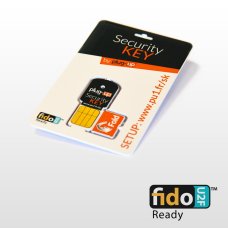

Two-factor authentication is highly recommended to protect account data. At this point, the user is fully authenticated and able to access the service. Once this signed response makes it back to the service, the site is able to validate the user with the public key it was given during registration.

Hitting the button on the device unlocks the U2F security key, also known as the FIDO authenticator, and selects the proper key it used during registration to send a signed response back to the challenge it was sent to authenticate against. A response is then sent only after the user pushes the button on the universal second factor device. This challenge will be sent back to the browser. The application will send a login challenge after the user has logged in correctly with their username/password. When a user with a universal second factor registered device attempts to log in to the site with which they've enabled U2F multifactor authentication, a few things happen. This registration process creates the key pair for the second factor of authentication that is used each time during login going forward. The private key is kept locally on the universal second factor device, and is never sent to the provider.

This approval creates a key pair, in which the public key is sent to the online service and linked to the particular user's account. This is done by pressing the button on the universal second factor device when prompted, which starts the process of creating the second factor. The universal second factor standard was created by Google and Yubico, and uses the FIDO protocol with standard public key cryptography to provide a secure second form of authentication.Ī U2F security key is registered with a service, like Facebook, by approving it during the registration process. In order to use this feature within Facebook, the user needs to own a universal second factor device, or U2F security key, to enable login approvals through the security section of their profile. Facebook recently introduced the ability to use what they call a Facebook Security Key as a second factor of authentication to its site.


 0 kommentar(er)
0 kommentar(er)
